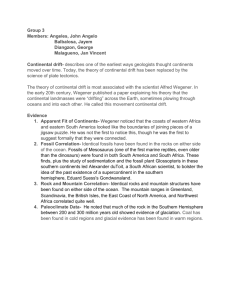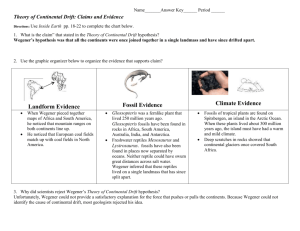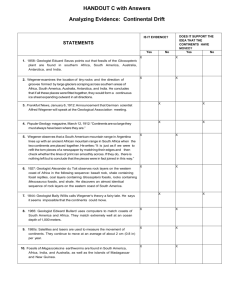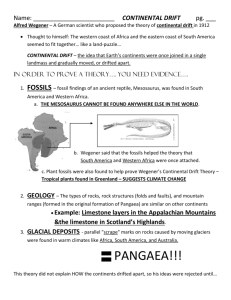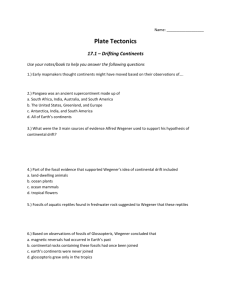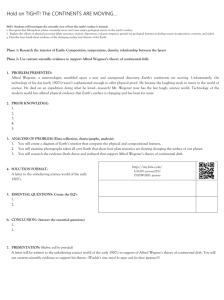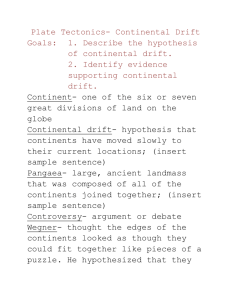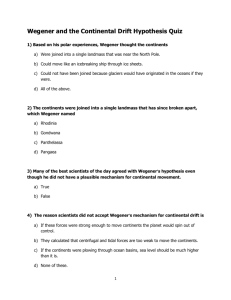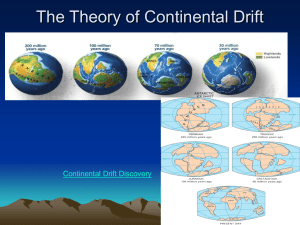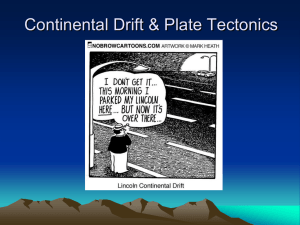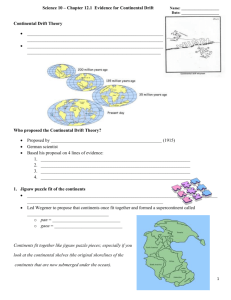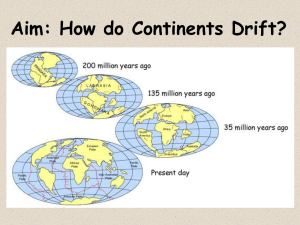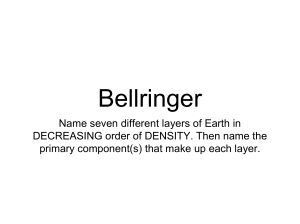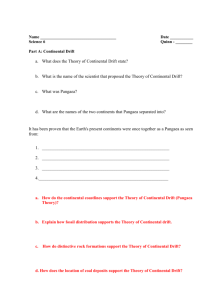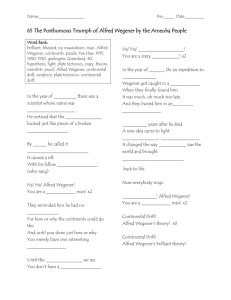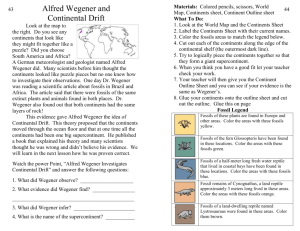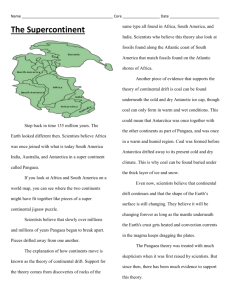Continental-Drift-activity
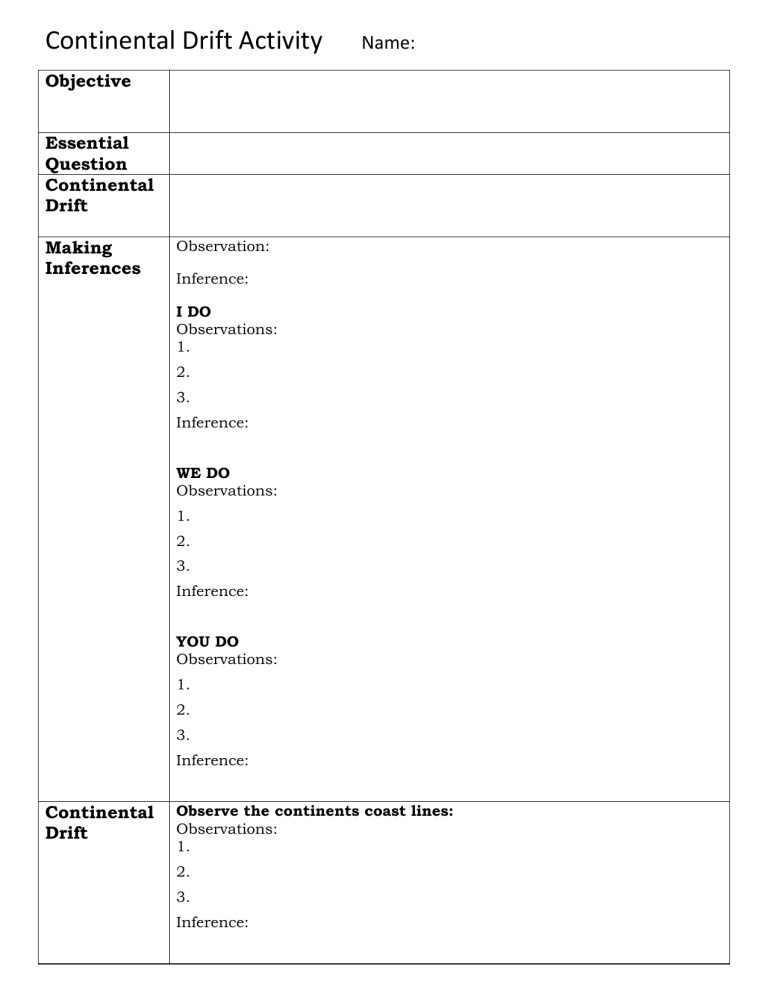
Continental Drift Activity
Name:
Objective
Essential
Question
Continental
Drift
Making
Inferences
Observation:
Inference:
Continental
Drift
I DO
Observations:
1.
2.
3.
Inference:
WE DO
Observations:
1.
2.
3.
Inference:
YOU DO
Observations:
1.
2.
3.
Inference:
Observe the continents coast lines:
Observations:
1.
2.
3.
Inference:
Evidence of
Continental
Drift
Do they fit together perfectly? Yes or No
What may have caused the coastlines to change over time?
1.
2.
Observe the fossil placement:
Observations:
1.
2.
3.
Inference:
1.
2.
3.
4.
Observe earthquake and volcano activity:
Observations:
1.
2.
3.
Inference:
Pangaea
SCR Prompt
(Please write your SCR on a separate piece of paper, this will be turned in!):
Today you learned about all of the evidence supporting continental drift. Using that information, make a prediction about what Earth’s continents will look like 100 million years from now. Make sure to support your claim with at least three pieces of evidence and provide commentary for each (this should be at least
8 sentences long).
Evidence of Not?
On the Analyzing Evidence worksheet, read the statement in each box and check whether the statement is evidence or not in the left columns, and whether it supports the movements of the continents in the right columns.
Is it
Evidence?
Statements
Does it support the continental drift theory?
Yes No Yes No
1.
1858: Geologist Eduard Seuss points out that fossils of the
Glossopterus pant are found in southern Africa, South America,
Australia, Antarctica, and India.
2.
Wegener examines the location of tiny rocks and the direction of grooves formed by large glaciers scraping across southern areas of
Africa, South America, Australia, Antarctica, and India. He concludes that if all these places are fitted together, they would form a continuous ice sheet expanding outward in all directions.
3.
Frankfurt News, January 6, 1912: Announcement that German scientist Alfred Wegener will speak at the Geological Association meeting.
4.
Popular Geology magazine, March 12, 1912: “Continents are so large they must always have been where they are.”
5.
Wegener observes that the South American mountain range in
Argentina lines up with an ancient African mountain range in
South Africa where the two continents are placed together. He writes: “It is just as if we were to refit the torn pieces of a newspaper by matching their edges and then check whether the lines of print ran smoothly across. If they do, there is no thing left but to conclude that the pieces were in fact joined in this way.”
6.
1927: Geologist Alexander du Toit observes rock layers on the western coast of Africa in the following sequence: basalt rock, shale containing fossil reptiles, coal layers containing Glossopteris fossils, rocks containing Mesosaurus fossils, and shale. He discovers an almost identical sequence of rock layers on the eastern coast of South America.
7.
1944: Geologist Baily Willis calls Wegener’s theory a fairy tale. He argues that the theory should be ignored.
8.
1965: Geologist Edward Bullard uses computers to match coasts of
South America and Africa. They match extremely well at an ocean depth of 1,000 meters.
9.
1980s: Satellites and lasers are used to measure the movement of continents. They contiue to move at an average of about 2 cm (0.8 in) per year.
10.
Fossils of Megascolecina earthworms are found in South America,
Africa, India, and Australia, as well as in the islands of Madagascar and New Guinea.
